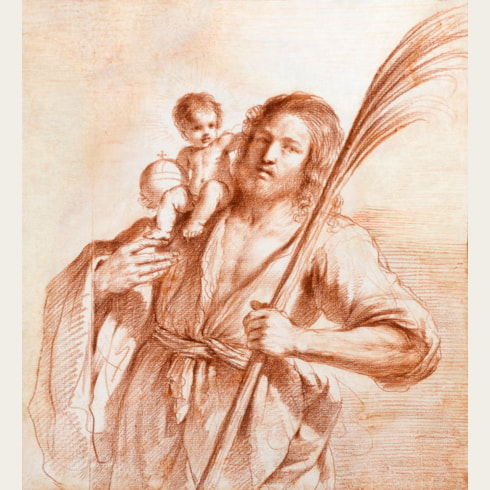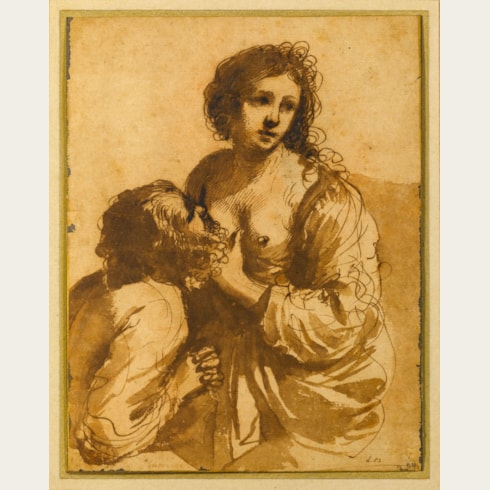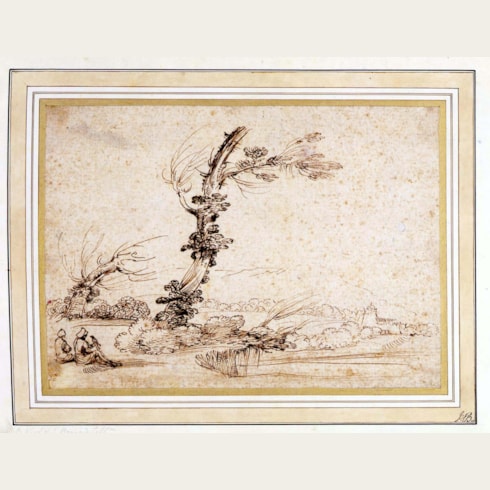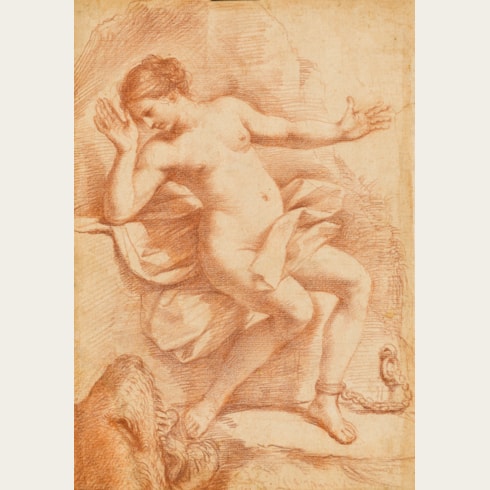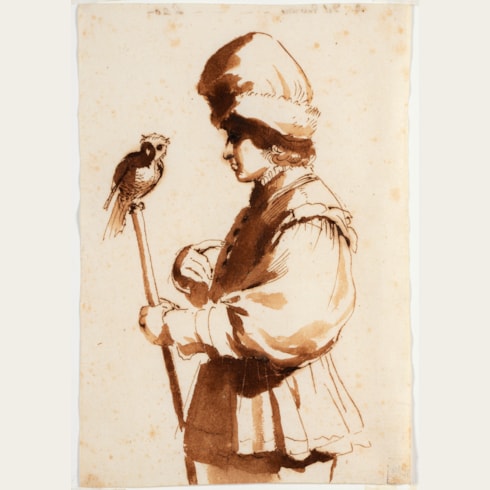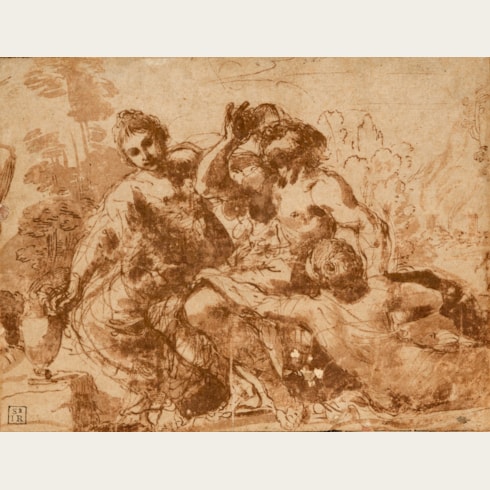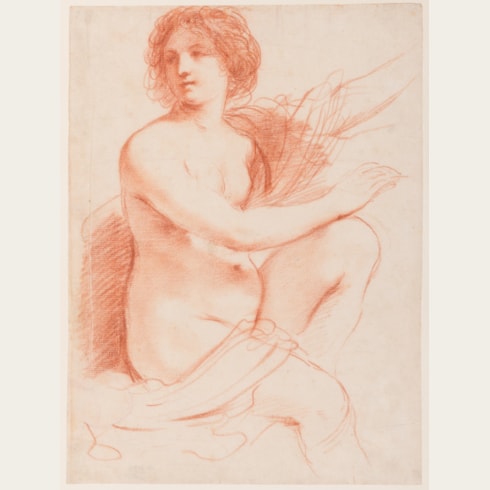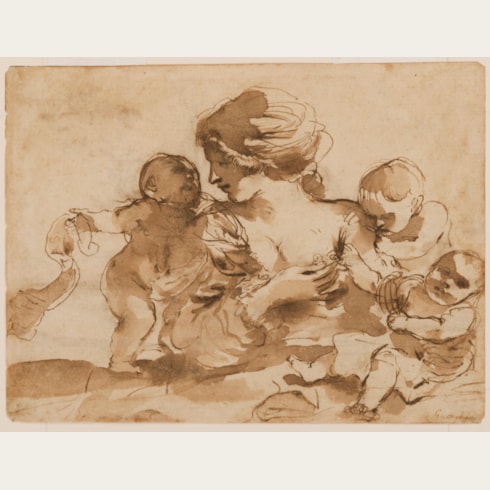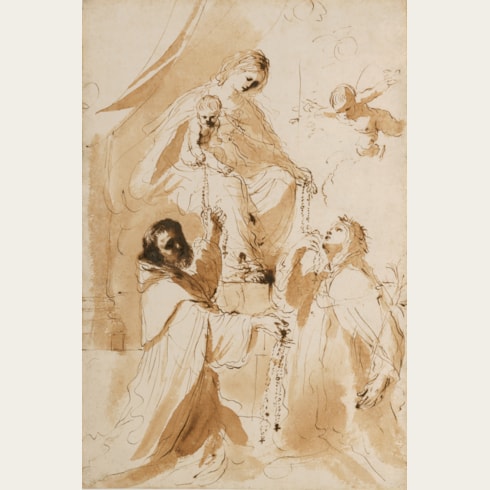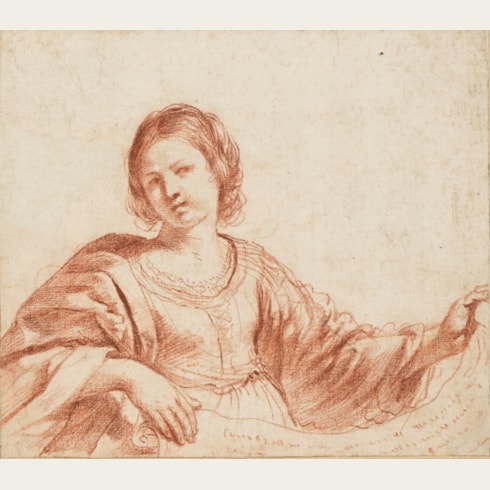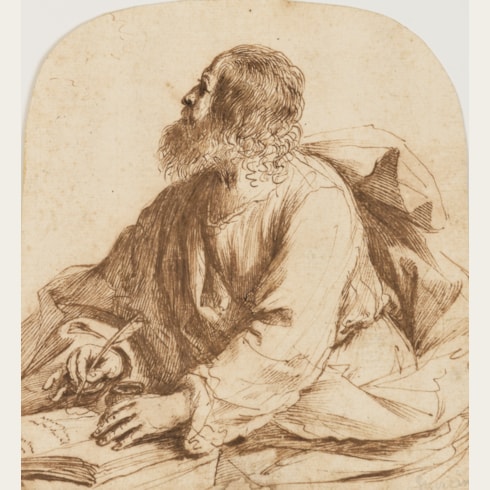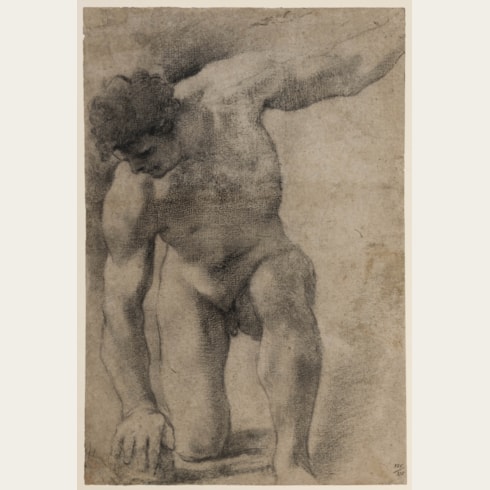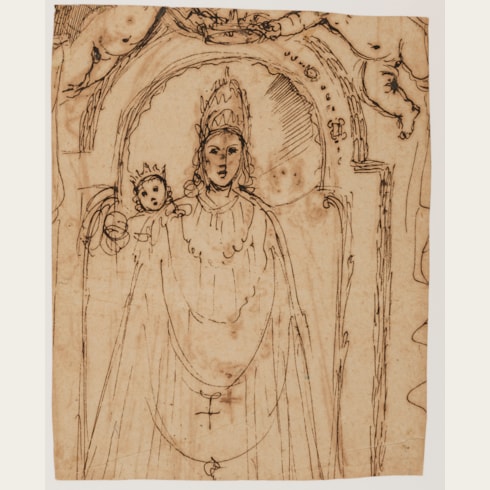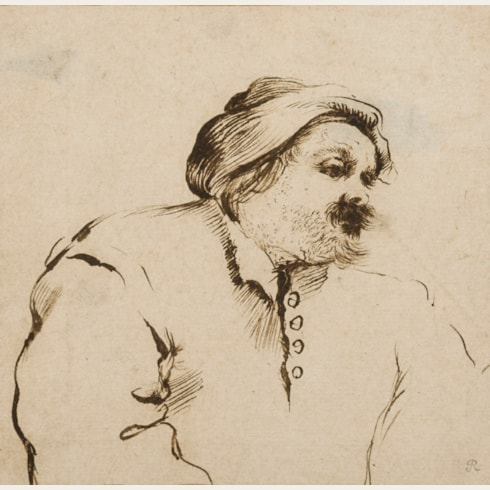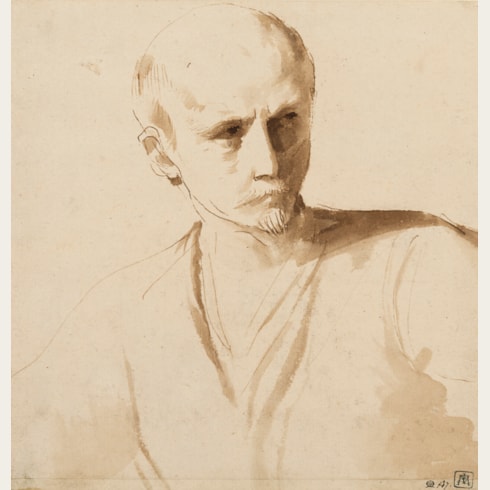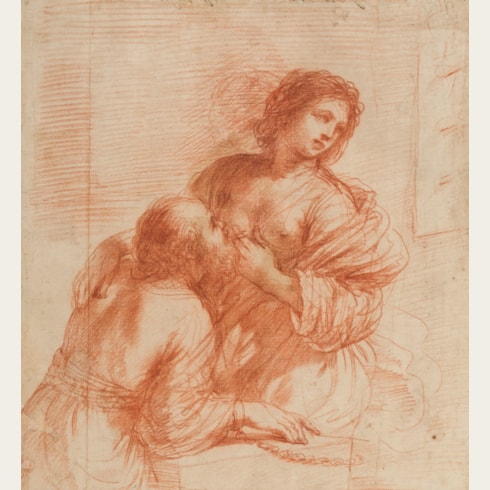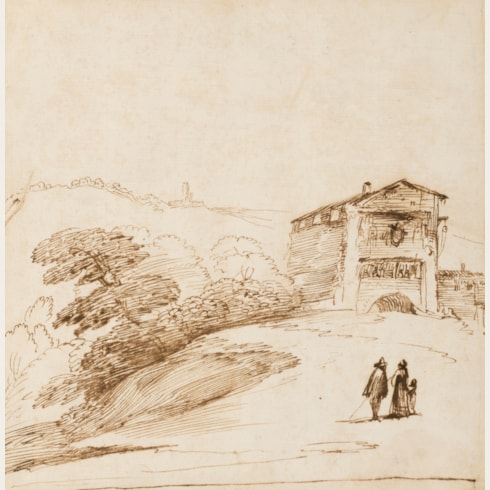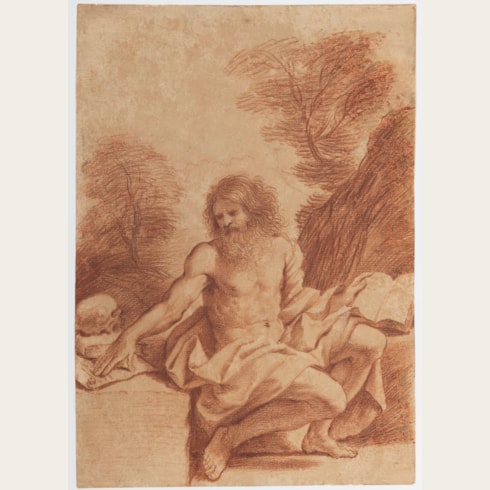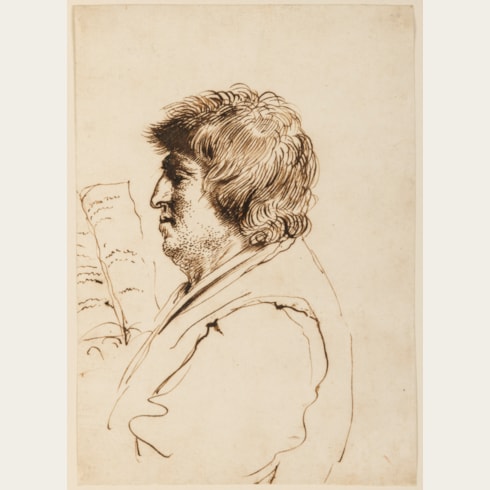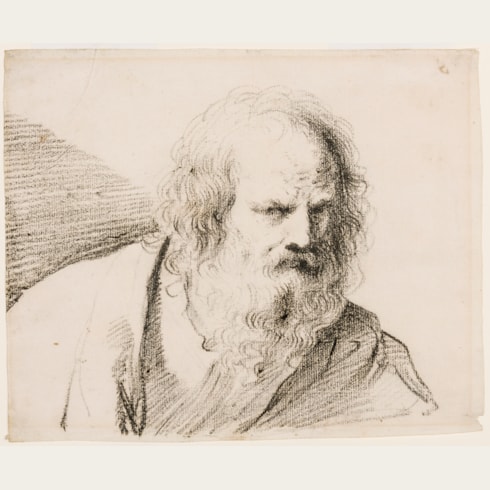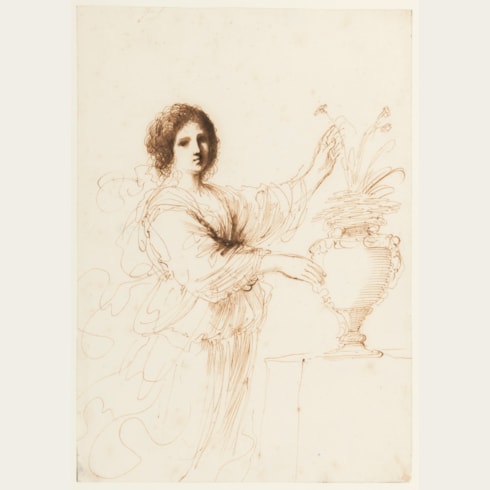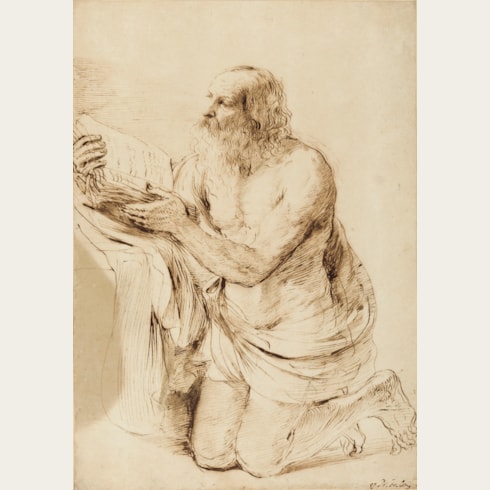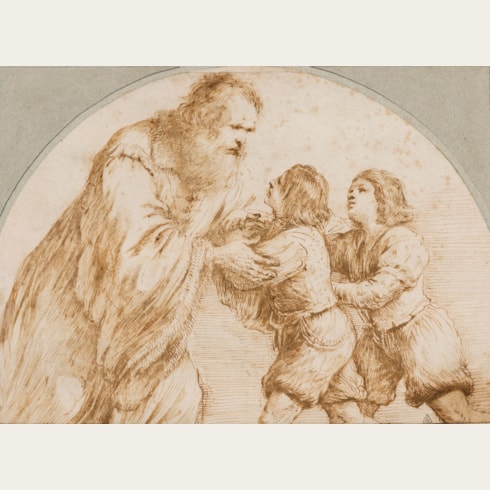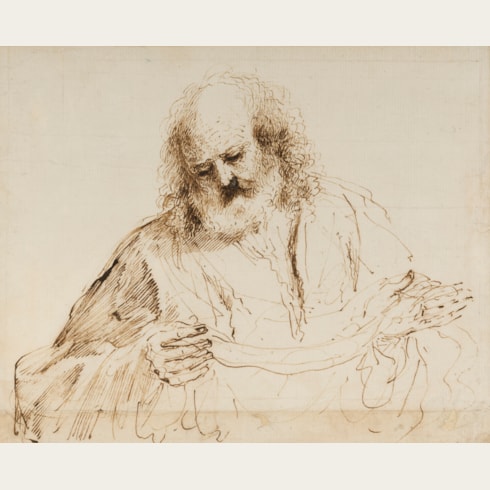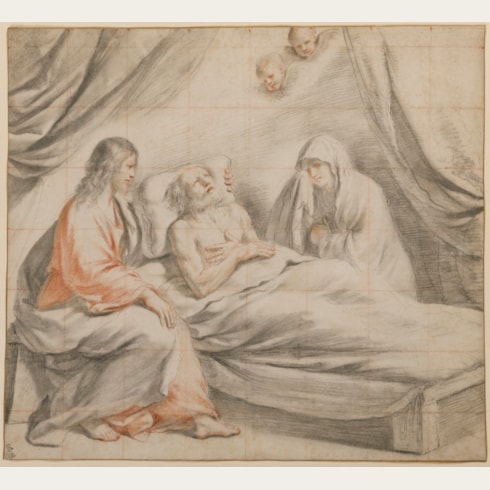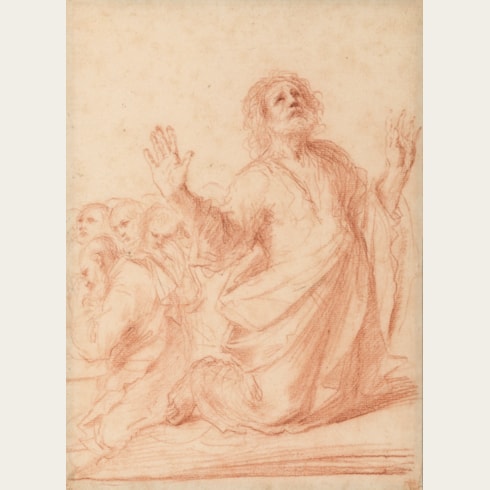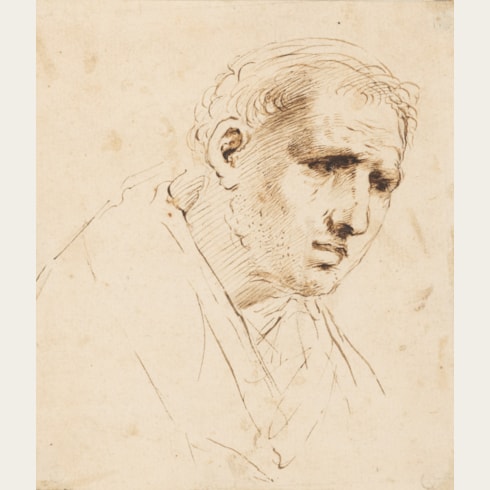Giovanni Francesco Barbieri GUERCINO
(Cento 1591 - Bologna 1666)
Four Winged Putti: Study for The Madonna of the Rosary
220 x 335 mm. (8 5/8 x 13 1/4 in.)
Watermark: A bunch of grapes above the letters MC.
ACQUIRED BY THE NATIONAL TRUST FOR THE VYNE, BASINGSTOKE, HAMPSHIRE.
At the time of its sale, or soon after, the late Sir Denis Mahon connected the present drawing with the putti in the upper half of The Madonna of the Rosary, with Saints Dominic and Catherine of Siena, an altarpiece that Guercino painted in 1642 for San Marco, Osimo, still in situ. This had been commissioned in fulfilment of the wishes of Cardinal Agostino Galamini, bishop of Osimo and titular Cardinal of the church of the Aracoeli, in Rome, who had died in 1639. Guercino received a down-payment in August, 1641. In Malvasia's list of the painter's commissions, the altarpiece is cited under 1642, the year when it was designed and executed.
In the picture, four putti appear in the sky to either side of the Virgin and Child in glory, one to the left and three to the right. They are winged and proffer or scatter roses in recognition of Saints Dominic and Catherine below. The Virgin and Child each hand a rosary to the saints as they kneel to receive them. The roses flourished by the putti in the sky are an allusion to these rosaries, or strings of beads. A worshipper praying to the Virgin uses these beads as mnemonic cues so that his prayers are said in correct order. Saints Dominic and Catherine are associated with the recitation of such prayers and so, too, with rosaries.
This ex-Chute drawing was made early on in the preparatory process of the altarpiece. Of the four, two are winged and two hold roses. Only the putto in the centre is winged and has flowers in one hand. The pair of putti to the right of the drawing, one above the other, seems to be for the middle and lower putti in the upper right of the picture, but in reverse. The putto flying towards the spectator in the centre of the sheet presages the child angel in the top right, again in reverse. The one mostly in shadow, upper left, prefigures the solitary winged cherub in the top left.
Two pen-and-ink drawings for the same group of putti to the upper right of the altarpiece have survived. One, formerly in the collection of Sir J. C. Robinson, was offered at Millon, Paris, on 15 June 2015, and is a study for the same pair seen to the right of the ex-Chute drawing, but in reverse and so in the same sense as their painted equivalents, from which, however, they differ in many respects. In the ex-Sir J. C. Robinson collection drawing one of the putti holds a vase from which he takes the roses he is about to scatter. The second pen-and-ink drawing, Study of Two Putti among Clouds, formerly Sotheby's, London, present whereabouts unknown, is in a similar, engraver-like style to that just mentioned. The two putti in this ex-Sotheby's drawing this time correspond, with differences, to those at the top and centre of the same group of three in the top right of the altarpiece.
Nicholas Turner
A coarsely reworked counterproof of this drawing is in the Royal Collection at Windsor Castle, part of an extensive collection of nearly 240 offsets of red chalk drawings by Guercino acquired from the Casa Gennari in Bologna in the late 1750s or early 1760s by Richard Dalton for King George III.
Giovanni Francesco Barbieri, known as Il Guercino (‘the squinter’) because he was cross-eyed, was by the second decade of the 17th century one of the leading painters in the province of Emilia. Born in Cento, a small town between Bologna and Ferrara, Guercino was largely self-taught, although his early work was strongly influenced by the paintings of Ludovico Carracci. In 1617 he was summoned to Bologna by Alessandro Ludovisi, the Cardinal Archbishop of Bologna, and there painted a number of important altarpieces, typified by the Saint William Receiving the Monastic Habit, painted in 1620 and now in the Pinacoteca Nazionale in Bologna. When Ludovisi was elected Pope Gregory XV in 1621, Guercino was summoned to Rome to work for the pontiff and his nephew, Cardinal Ludovico Ludovisi. It was in Rome that Guercino painted some of his most celebrated works, notably the ceiling fresco of Aurora in the Casino Ludovisi and the large altarpiece of The Burial and Reception into Heaven of Saint Petronilla for an altar in Saint Peter’s. The papacy of Gregory XV was short-lived, however, and on the death of the Pope in 1623 Guercino returned to his native Cento. He remained working in Cento for twenty years, though he continued to receive commissions from patrons throughout Italy and beyond, and turned down offers of employment at the royal courts in London and Paris. Following the death of Guido Reni in 1642, Guercino moved his studio to Bologna, where he received commissions for religious pictures of the sort that Reni had specialized in, and soon inherited his position as the leading painter in the city.
Guercino was among the most prolific draughtsmen of the 17th century in Italy, and his preferred medium was pen and brown ink, although he also worked in red chalk, black chalk, and charcoal. He appears to have assiduously kept his drawings throughout his long career, and to have only parted with a few of them. Indeed, more drawings by him survive today than by any other Italian artist of the period. On his death in 1666 all of the numerous surviving sheets in his studio passed to his nephews and heirs, the painters Benedetto and Cesare Gennari, known as the ‘Casa Gennari’.
The drawings of Guercino, which include figural and compositional studies, landscapes, caricatures and genre scenes, have always been coveted by later collectors and connoisseurs. Indeed, the 18th century amateur Pierre-Jean Mariette noted of the artist that ‘Ce peintre a outre cela une plume tout-à-faite séduisante’. The largest extant group of drawings by Guercino is today in the Royal Collection at Windsor Castle; these were acquired from the Gennari family by King George III’s librarian, Richard Dalton, between about 1758 and 1764.
Provenance
Thence by descent in the Chute family, The Vyne, Basingstoke, until 1949
Their sale, London, Sotheby’s, 22 June 1949, lot 1 (bt. Wilson)
R. E. A. Wilson, London
By whom the album broken up and the drawings sold individually
Private collection, UK.
Literature





